In the ebb and flow of relationships, we often find ourselves navigating through challenges, seeking understanding, and striving for connection. Reflecting on my own journey, I recall a chapter where the dynamics took a perplexing turn, leaving me grappling with the task of learning how to respond to DARVO.
At that time, romance colored my world, and I found myself entangled with a captivating woman. However, as the relationship progressed, subtle shifts began to occur. Disagreements that once seemed like mere misunderstandings took on a different hue. It was during these moments of discord that I unwittingly encountered DARVO – an acronym for Deny, Attack, and Reverse Victim and Offender.
As I attempted to address concerns or express my feelings, a disconcerting pattern emerged. Instead of fostering open and healthy communication, my partner seemed to employ a strategic defense mechanism: Deny any wrongdoing, Attack my character, and skillfully Reverse the roles of victim and offender. It was as if the very foundation of our connection became a battlefield where accountability and understanding were elusive.
Yes, it is as insidious as it sounds. Let’s delve into the intricacies of this perplexing behavior and explore effective strategies on how to deal with DARVO. By sharing my personal experience, and insights from counseling psychologist Dhriti Bhavsar (M.Sc, Clinical Psychology), who specializes in relationship, breakup, and LGBTQ counseling, I hope to shed light on the impact of DARVO in relationships and empower you to navigate the complexities of communication with resilience and clarity and ultimately recover from DARVO.
What Is DARVO In A Relationship?
Table of Contents
What does DARVO stand for? DARVO is an acronym for Deny, Attack, and Reverse Victim and Offender. It is a term coined by psychologist Jennifer J. Freyd in the 1990s to describe a common pattern of behavior observed in some interpersonal conflicts, particularly in situations where a person is confronted about their actions or behavior.
Dhriti says, “The DARVO method is a common manipulation tactic employed by narcissists as an ego defense. A core characteristic of narcissistic personality disorder is a very fragile ego state. As a result of their low self-esteem, they view the world with an internal sense of insecurity, which they overcompensate with a superiority complex.
“They see normal interactions as threatening and feel safe only when they take power away from the people around them. For the narcissist, everything is a power struggle and they get off on being able to control other people’s actions and emotions. A narcissist needs control at all cost, especially that of their victim’s mental health.”
For the sake of greater clarity on what this means, let’s take a look at how each component of DARVO is used against the victim:
- Deny: First, the perpetrator denies wrongdoing or responsibility for their actions. This refusal to be held accountable can take various forms, ranging from outright refutation of an event to downplaying the significance of their bad behavior, but accepting responsibility is out of the question
- Attack: Following denial, the person often launches a counterattack against the individual who raised the issue. This attack can manifest as being unfairly accused, criticism of the victim’s account, blame-shifting, or even questioning the motives or character of the person bringing up the concern, making the victim doubt themselves
- Reverse victim and offender: In this stage, the person employing DARVO creates a false narrative and resorts to blame-shifting in the relationship, portraying themselves as the victim and the accuser as the offender. By doing so, they aim to deflect attention from their own actions and garner sympathy or support and abusive incidents become the victim’s fault.
DARVO emotional abuse can be particularly challenging in relationships because it creates a sense of cognitive dissonance, and the person raising a valid concern may end up feeling gaslit, confused, or invalidated. The aim is to divert attention and create doubt and this pattern of behavior can contribute to a toxic cycle of miscommunication and unresolved issues, in which you doubt your own judgment. What is DARVO in a relationship if not a manipulative tactic?
Recognizing these DARVO tactics can empower individuals to address conflicts more effectively, navigate discussions with a clearer understanding of the dynamics at play, and ultimately disarm DARVO. In the next sections of this article, we’ll explore how to respond to DARVO and foster healthier communication in relationships.
Related Reading: “My Husband Misinterprets Everything I Say” – 17 Tips To Help You
DARVO Examples And Impact
It is often hard to spot emotional abuse like DARVO because we tend to believe that interpersonal interactions are going to be mutually beneficial. This is particularly true in romantic relationships. It is hard to accept that a person so close could indulge in abusive behavior. In fact, betrayal trauma theory “posits that there is a social utility in remaining unaware of abuse when the perpetrator is a caregiver.” And the perpetrator makes the most of it to maintain power using emotional abuse.
Dhriti speaks of a case where being subjected to DARVO by a narcissist left her client convinced that she was a bad person. “My client was in her mid-20s and had been in a relationship with a guy for around 10 months. After the first few months, she began noticing subtle changes in his behavior — almost like his mask was slipping. It turned out that this guy had narcissistic personality disorder and he was using the manipulative tactics of DARVO on my client.

“At one point, my client lost a family member and was stricken with grief. But her boyfriend began guilt-tripping her for not giving him any of her time. When she confronted him about this and tried to break up with him, he retorted with the classic, ‘No, the truth is you always make things about you and this is all your fault.’ My client, being in grief, apologized and continued dating him for about two weeks.
“But during this time, he continued to make her feel guilty for not engaging in physical intimacy with him. When she called him out for this, he responded with classic gaslighting phrases like ‘It’s not a big deal’, and ‘You’re trying to play the victim here again.’ At this point, my client had had enough and said, ‘Okay, maybe I am the bad guy here, so why do you want to continue dating me if I’m so bad,’ and ended the relationship there.
“It was after that that she came to me for therapy and asked me if she really was a terrible person for the way she treated him. This is how manipulative a person can be when they use DARVO tactics. He had gotten so deep in my client’s head that she genuinely thought she was a bad person for trying to set boundaries.”
Related Reading: How to Deal with a Manipulative Husband
Examples of the DARVO cycle and its impact can provide insight into how this defense mechanism operates in real-life situations and the potential consequences it can have on your self-image and relationships:
Scenario 1: The broken promise
- Deny: You confront your partner about breaking a promise to attend an important event together. Your partner responds, “I never promised to be there. You must have misunderstood.”
- Attack: Your partner continues, “Besides, it’s not like I’m the only one who flakes on plans. You’re no better. Maybe you’re just upset because you have no social life.”
- Reverse victim and offender: Your partner concludes with false accusations like, “I can’t believe you’re making me out to be the bad guy here. You’re always trying to control everything. I’m just trying to have some independence.”
Scenario 2: Relationship trust
- Deny: Your partner denies ever promising to spend quality time together on weekends, despite clear previous commitments. When confronted, they respond with, “I never said we had to spend every weekend together. You’re exaggerating.”
- Attack: In response to your disappointment, your partner counters, “You’re always so clingy. Maybe if you had a life outside of our relationship, you wouldn’t be so upset about spending time apart.”
- Reverse victim and offender: Your partner concludes, “I can’t believe you’re making me out to be the bad guy here. You’re the one who’s suffocating me with your need for constant attention. I need space.”
Related Reading: 11 Things That Happen In Relationships Without Trust
Scenario 3: Financial transparency
- Deny: Concerned about the lack of financial transparency in the relationship, you confront your partner about undisclosed spending. They deny any financial infidelity, saying, “I don’t know what you’re talking about. I’ve always been open about my finances with you.”
- Attack: In response to your persistence, your partner shifts blame, stating, “You’re so obsessed with money. Maybe if you contributed more, I wouldn’t have to hide things. You’re the one with the problem.”
- Reverse victim and offender: Your partner concludes, “It’s ridiculous that you’re accusing me. You’re the one who’s controlling and making a big deal out of nothing. I’m just trying to maintain some financial independence.”

A Reddit user describes experiencing abuse of this kind at the hands of her ex-partner, “My most recent DARVO experience was tonight when I (stupidly) tried to hold my soon-to-be-nex [narcissistic ex] accountable for his emotional/psychological abuse. He countered by saying that I was abusive to him and he was only reacting to my provocations. I don’t provoke fights. I was thrown off for a split second before I saw the DARVO deployment. For the record, I am calm and kind most of the time. It takes a lot to set me off but after 20 years, he knows all my buttons.”
Research has found, “…the existence of DARVO as a perpetrator strategy and establish a relationship between DARVO exposure and feelings of self-blame. Exploring DARVO aids in understanding how perpetrators are able to enforce victims’ silence through the mechanism of self-blame.” A common feature of child sexual abuse, these specific tactics can and often do escalate to other forms of abuse such as domestic violence in intimate relationships. Narcissists are often victims of their own mistreatment during childhood, but that does not mean you have to tolerate their abusive behavior.
If you are in immediate danger, call 9-1-1
For anonymous, confidential help, 24/7, please call the National Domestic Violence Hotline at 1-800-799-7233 (SAFE) or 1-800-787-3224 (TTY).
As you can see, the DARVO cycle is quite insidious. The narcissist is actively trying to create a pseudo-identity for you based on self-blame, thus undermining your sense of self and making you feel trapped. The kind of abusive behavior displayed in these DARVO examples can have a profoundly negative impact on the victim’s self-esteem and interpersonal relationships, such as:
Related Reading: Why Do Relationships Become Toxic? 10 Reasons
- Undermining trust: DARVO erodes trust by denying accountability. The repeated denial of one’s actions can make it challenging for you to trust the individual, as you will start to feel like your concerns are consistently dismissed
- Communication breakdown: The attack phase of DARVO can lead to a breakdown in communication or a relationship breakdown. Instead of addressing the initial concern, the conversation becomes focused on defending against the counterattack, hindering a resolution
- Gaslighting: This behavior often involves gaslighting, where the person employing these DARVO tactics manipulates your perception of reality. This can leave you questioning your own perceptions and feelings, contributing to self-doubt
- The cycle of unresolved issues: As DARVO deflects accountability and avoids addressing the root cause of conflicts, it can contribute to a cycle of unresolved issues in relationships. Without open and honest communication, problems persist and escalate
- Emotional distress: Experiencing DARVO can be emotionally distressing. The constant denial, attack, and reversal of roles can leave you feeling emotionally drained, frustrated, and invalidated — all signs of narcissistic abuse syndrome
- Power imbalance: The use of DARVO can create a power struggle in relationships, with one person manipulating the narrative and destroying the victim’s credibility to maintain control and avoid taking responsibility for their actions, and making the other feel powerless to change the situation
Recognizing these examples and understanding the impact of DARVO emotional abuse is crucial for those seeking to learn how to respond to DARVO in order to navigate conflicts healthily and constructively. Particularly when confronted with DARVO in marriage. In the next section, we’ll explore effective strategies on how to respond to and disarm DARVO and promote positive communication in relationships.
Related Reading: The Trauma Of Sexual Abuse Brings A Lifetime Of Intimacy Issues
How To Respond To DARVO — 7 Expert-Backed Strategies
Dhriti says, “Since a narcissist needs control, their MO is to completely isolate their victim and dismantle their support systems to make them wholly dependent on the narcissist. DARVO helps them accomplish this by making the victim question their own perception of reality, doubt their own intentions and integrity, and make them feel responsible for the narcissist’s suffering. They slowly chip away at their victim’s mental health by gaslighting them.”
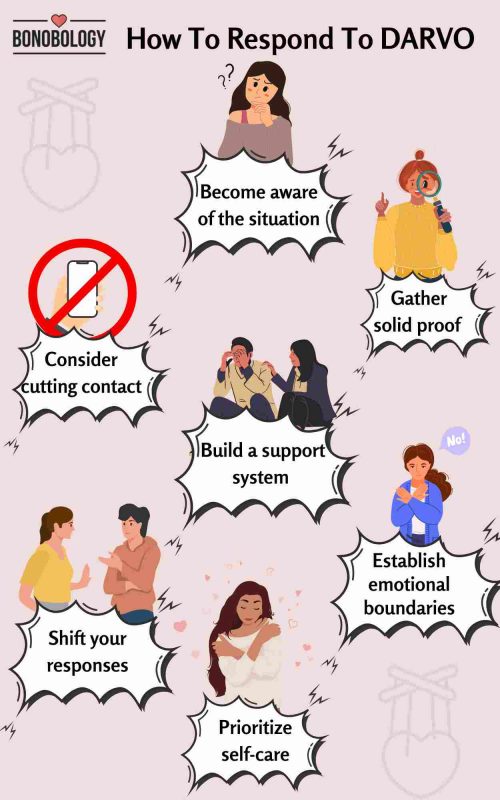
Indeed, what does DARVO stand for if not for the whims of a narcissist? If you want to recover from DARVO, responding to this manipulative tactic requires a thoughtful and assertive approach. Here are some strategies to consider when faced with the problem of how to respond to DARVO in a relationship or communication:
1. Become aware of the situation
Dhriti emphasizes the importance of becoming aware of the dynamics at play. “Educate yourself about DARVO and its patterns to better understand and navigate the situation. Do your research about narcissism so that you can spot these DARVO tactics sooner rather than later,” she advises. Do not fall into the trap of betrayal trauma theory.
Related Reading: Emotional Abuse Checklist – 18 Devastating Signs
2. Build a support system
Surround yourself with a strong support system. As we have already covered, a narcissist aims to isolate you. So, seek out friends, family, or a support group that can provide understanding and encouragement during challenging times. Having people who back you up is great for your mental health too.
3. Establish emotional boundaries
Dhriti also recommends you set boundaries with DARVO abusers. These internal boundaries, such as promising yourself not to attend events that feel unsafe, protect your core mental health and emotional well-being, reinforcing your values and bolstering your mental fortitude. This is a crucial step to disarm DARVO.
4. Gather solid proof
Dhriti suggests gathering evidence and documenting incidents before confronting the individual. This proof serves as a defense against gaslighting and provides a factual basis for addressing the issue. However, it is important to keep in mind that no amount of evidence will make a narcissist accept responsibility. This is purely to keep you from falling into their trap. It doesn’t help to reverse a gaslight, for the sake of your own sanity.
Related Reading: Dating A Narcissist? Here Are The Signs And How It Changes You
5. Consider cutting contact
Recognizing that you cannot change the person employing DARVO is crucial. Cutting contact may be a necessary step to protect yourself and disengage from a toxic dynamic. This may be easier said than done, especially if you’re romantically involved with them or dealing with DARVO or emotional abuse in marriage. But it may be your only option to avoid further harm to your own mental health.

6. Shift your responses
Dhriti notes that victims often realize that when they stop responding in the expected way, the individual using DARVO loses interest. Adjusting your responses can disrupt the pattern and encourage healthier interactions. For example, don’t get carried away when they shift blame toward you. Don’t attempt to reverse a gaslight as this would just complicate things further.
Related Reading: How To Deal With A Gaslighting Spouse Without Doubting Yourself?
7. Prioritize self-care
In line with Dhriti’s holistic approach, prioritize self-care. Caring for your mental, emotional, and physical well-being is essential during challenging situations. Make self-care a priority to maintain resilience while you deal with this situation. Seek support from a therapist if you need help on your healing journey. This is also essential to recover from DARVO.
By incorporating expert-recommended tips, you can equip yourself with valuable tools to navigate relationships where DARVO may be present, be better informed about how to respond to DARVO, and foster personal well-being in the process.

Key Pointers
- DARVO is an acronym for Deny, Attack, and Reverse Victim and Offender
- It is a common tactic used by narcissists to deny accountability and victimize people
- Being a victim of DARVO can leave you emotionally distressed, filled with self-doubt, and isolated
- Become aware of what’s happening and do what is necessary to take your life back
In conclusion, navigating the intricate dynamics of DARVO in relationships demands a vigilant eye and a strategic approach. Recognizing the patterns of denial, attack, and the reversal of victim and offender in this harmful behavior empowers individuals to respond effectively and maintain the integrity of their communication.
By understanding the psychological underpinnings of DARVO, one can break free from the cycle of emotional manipulation and work toward fostering healthier relationships. Whether through setting emotional boundaries, seeking professional help, or practicing self-care, the tools to dismantle DARVO’s impact are within reach. As we strive for genuine connection and open communication, the awareness and resilience cultivated in the face of DARVO contribute to creating relationships built on trust, transparency, and mutual respect.
FAQs
DARVO is effective due to its adept manipulation of psychology and emotions. By denying wrongdoing, attacking the accuser, and reversing victim and offender roles, it exploits social norms and the fear of confrontation. Emotional manipulation and gaslighting techniques further sow doubt in the accuser’s mind, creating a complex emotional landscape. This manipulative strategy often leaves individuals disoriented, making it challenging to call out the false narrative and assert their reality, thereby allowing DARVO tactics to persist in relationships.
Spotting DARVO requires a keen awareness of certain behavioral patterns in interpersonal conflicts. The first indicator is a consistent pattern of denial when confronted with accountability or wrongdoing. Individuals employing DARVO often vehemently deny their actions, even in the face of evidence or repeated instances. The second red flag is the attack phase, where the person shifts the focus by attacking the accuser’s character, motives, or behavior, diverting attention away from the initial concern. Lastly, DARVO is evident in the reversal of victim and offender, where the individual portrays themselves as the victim, manipulating the narrative to garner sympathy and deflect blame.
To recognize DARVO, pay attention to these sequential behaviors during conflicts. If you observe a repeated pattern of denial, personal attacks, and role reversal, it may indicate the use of DARVO in an attempt to manipulate perceptions and avoid accountability. Being vigilant for these signs can empower you to respond more effectively and maintain healthier communication in your relationships.
Your contribution does not constitute a charitable donation. It will allow Bonobology to continue bringing you new and up-to-date information in our pursuit of helping anyone in the world to learn how to do anything.

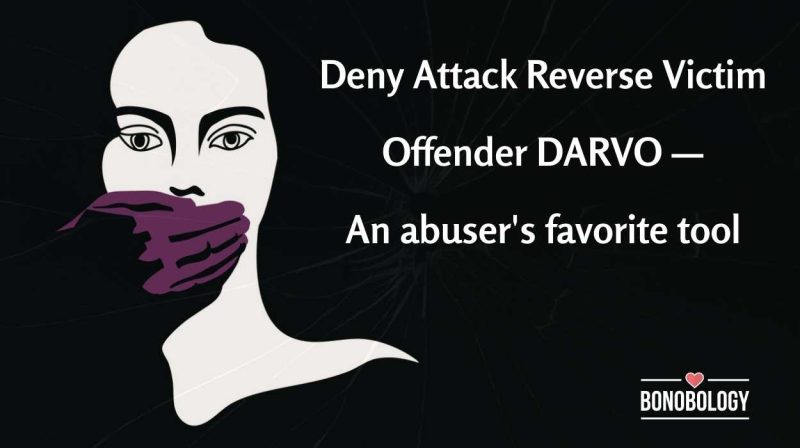






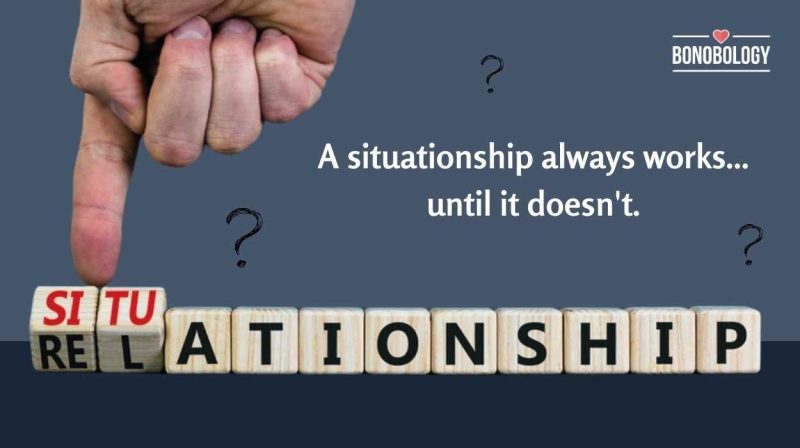


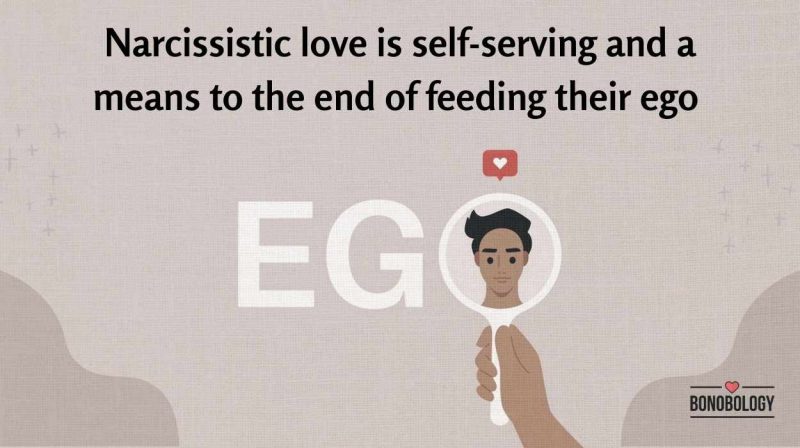






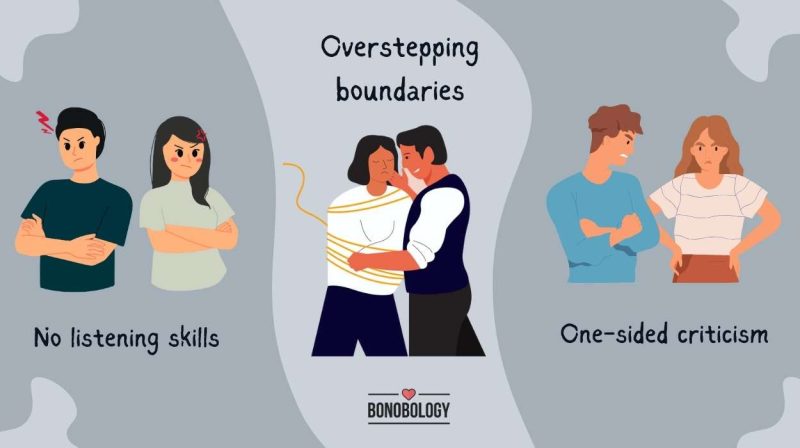



Featured
13 Signs Of A Hot And Cold Relationship & How To Break The Pattern
21 Subtle Signs You’re Not Really In Love With Your Partner
I Hate My Girlfriend: Why You Feel This Way And What To Do
When Health Challenges Affect Your Relationship Dynamics
5 Harsh But True Signs He’ll Never Marry You
21 Signs That You Are Alone In A Relationship
11 Situationship Red Flags You Should Know About
Why Do I Get Attached So Easily? 9 Possible Reasons and Ways to Stop
What Is Fexting, And Why Is It Bad For Your Relationship?
Are Narcissists Capable Of Love?
11 Prominent Male Narcissist Traits to Watch For
Why Does My Girlfriend Hit Me? Expert Shares 11 Possible Reasons And Ways To Cope
How Does A Narcissist React When They Can’t Control You?
“My Anxiety Is Ruining My Relationship”: 6 Ways It Does And 5 Ways To Manage It
13 Distinctive Traits Of Female Narcissists Revealed
Recognizing The 13 Red Flags Of A Controlling Relationship
What Are The Examples Of Narcissistic Behavior In A Relationship?
11 Signs He Is Forcing Himself To Love You
21 Signs The Relationship Is Over For Him and How To Deal With It
21 Stages Of A Narcissistic Relationship With An Empath